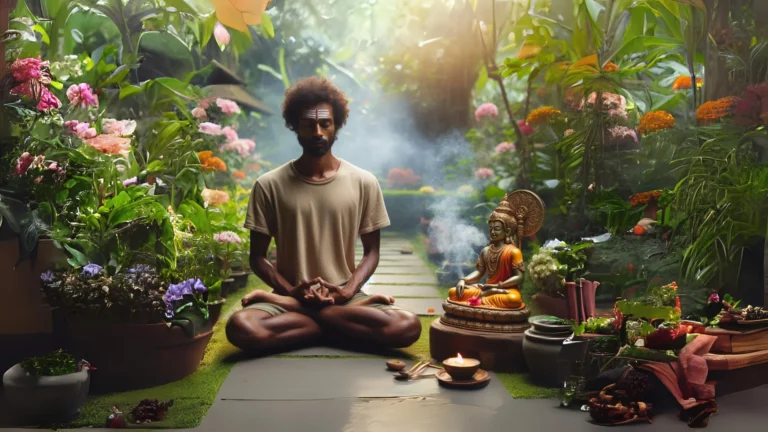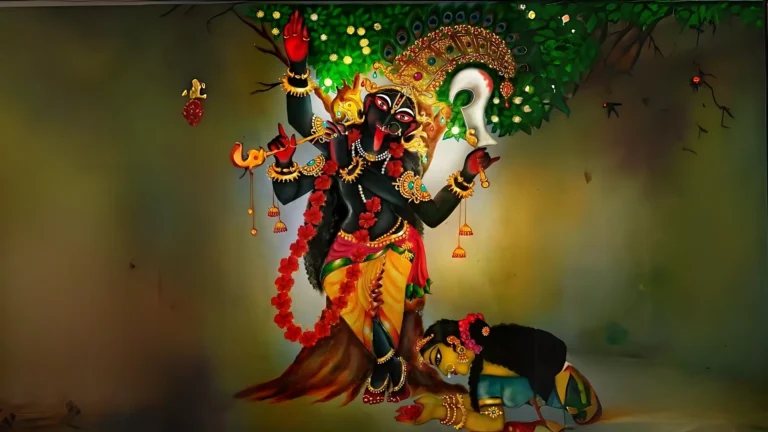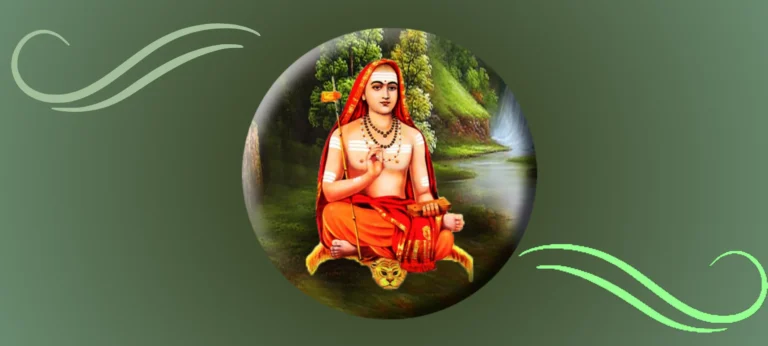Please Like the Blog and Share it for Maximum Reach
Table of Contents
Pleasure Seeking a Great Impediment inherent in the Purusharthas

There are 4 aims of life or Purusharthas in Sanatana Dharma. Man seeks sensory pleasures. Desires in the heart stoke pleasures or the enjoying tendency. The assumption is that, fulfillment of desires finally yields pleasure of some kind.
This is the expectation of the common population of the world. Some people may “like” eating a sweet and derive pleasure out of it. Certain others may seek pleasure through hearing “classical music”. The first example is pleasure seeking through the sensual aspect of “taste” while the second example is seeking pleasure through “hearing”.
Some people may like to get creative and seek pleasure through their art and so on.
Pleasure Seeking through Kama
The Vedic texts have categorized these pleasure seeking tendencies under the broad category of “Kama” (काम) or the tendency of desire fulfillment. This categorization of “Kama” is based on “what is” the status of man in his normal, undisciplined state of existence.
The drawback of this pleasure seeking tendency is that it is short-lived or fleeting and hence it has to be repeated in small doses from time to time. Another drawback of this tendency is that one cannot maintain the pleasure for an extended time period , such pleasure goes on reducing with every passing second, and the senses become parched.
Thus the senses and mind become ready for the next dose of pleasure.

The pleasure seeking tendency is just like banned drugs, that make the senses weaker and weaker with passing time. After some time, the senses become saturated and cannot enjoy it further. Then the mind seeks another opportune moment when it can continue satisfying its pleasure seeking tendencies.
The fact about pleasure seeking is that the more you indulge the mind with one point of attention towards “only” pleasure seeking, the mind shall end up being displeased and tired.
Gratification through Artha
The next level of pleasure seeking is called “Artha”(अर्थ). This corresponds to things which are subtler than gross pleasures. This has comfort, power, wealth, position, education, control, and the like bucketed under it.
Thus it corresponds to all worldly success. All kinds of success are included under “Artha”. The condition to qualify towards getting satisfied through “Artha” is that “Kama” has to be sacrificed. “Artha” seems to be more meaningful as compared to “Kama”.

When someone studying at a reputed college, sacrifices spending time with friends in order to come out with flying colors in exams, is chasing “Artha”.
Gratification through Dharma
The next level of pleasure seeking is called “Dharma”. This pleasure seeking is subtler than both “Artha” and “Kama”. This includes doing something for others, by sacrificing personal agenda. For example, parents sacrifice their comforts and work hard so that their children get a good education.
They make provisions for the children so that children can lead a better life. A higher “Dharma” can be when someone sacrifices oneself for satisfying the society at large. Through service to others, one derives satisfaction.

One may take in all troubles so that the other man, who is not even a blood-relative, gets benefited. This, one can categorize as pleasure seeking of some kind, although its nature differs from “Kama” and “Artha”. Dharma also includes morality, service done to others, etc.
7/8 Questions from Sanatana Dharma
The scores generated in this Quiz may or may not be absolute. There may be right or wrong answers to each Question. A percentage towards 100 indicates that you are more aligned to the overall subject matter.
The “I” and “Mineness” is very Deep
The purpose of Dharma, Artha and Kama is to experience personal happiness. I watch a movie so that “I” is happy. I undertake higher qualifications because it contributes towards “my” happiness.
I serve my children and the society because “I” feel happy doing it. However, the science of Vedanta concludes that Dharma, Artha and Kama are transitory and cannot give one “permanent fulfillment.
There are still some fundamental existential questions that remain unanswered.
The question is, is there something that is beyond these three channels of happiness?
Vedanta says that “Moksha” or “Spiritual Enlightenment” shall finally end the search for all happiness and grant one, that state of permanent happiness and fulfillment, beyond which nothing more remains to be sought.
Attaining “Moksha” or “Liberation” can put an end to all unhappiness from its very root and push one into a realm of infinite happiness and bliss. When one realizes the answer to “Who am I”, there is an immediate cessation to all unhappiness and one attains bliss at once. The “Who Am I” technique was propounded mainly by the great Indian Sage Sri Ramana Maharshi.

This answer to “Who am I”, one attains only when one experiences perfect bliss and happiness in a choiceless manner.
The Question of Self and Witness
As one realizes the Self or one’s true nature, the search for happiness will automatically cease forever. All Indian traditions like Buddhism, Hinduism, Jainism and Sikhism allude to the attainment of the “Self” as the final destination of Bliss or eternal happiness.
Vedanta introduces the concept of “Moksha” by first making us familiar to our real self. All practices that are carried out in line with this concept can propel us towards the goal of Moksha. Vedanta familiarizes us with the “witness”.
When one gets established in the witness permanently Moksha dawns. For example, the eyes witness the scenes around us or the world. One can never see one’s own eyes except its reflection in the mirror, as separate from the body, also as part of the rest of the world.
But there is a faculty that recognizes or experiences the state of our eyes. Something that recognizes the eyes as shut or open, is the faculty of the mind. All our experiences are cognizable through the faculty of the mind.
Self-Awareness is portal to Happiness
When we are in a class and our mind is wandering, we cannot follow what is happening in the class because our mind has not registered the experience at the conscious level although impressions form at the subconscious level. There is something that recognizes that “we are happy”.
There is recognition of happiness and this happiness is in the mind and differs from the “seer” of the changes or experiences of the mind. Vedanta points to this “witness” as the source of everything. When one realizes this source and gets established in that witness following which the mind’s modifications get arrested permanently, Moksha dawns.
Please Like the Blog and Share it for Maximum Reach






